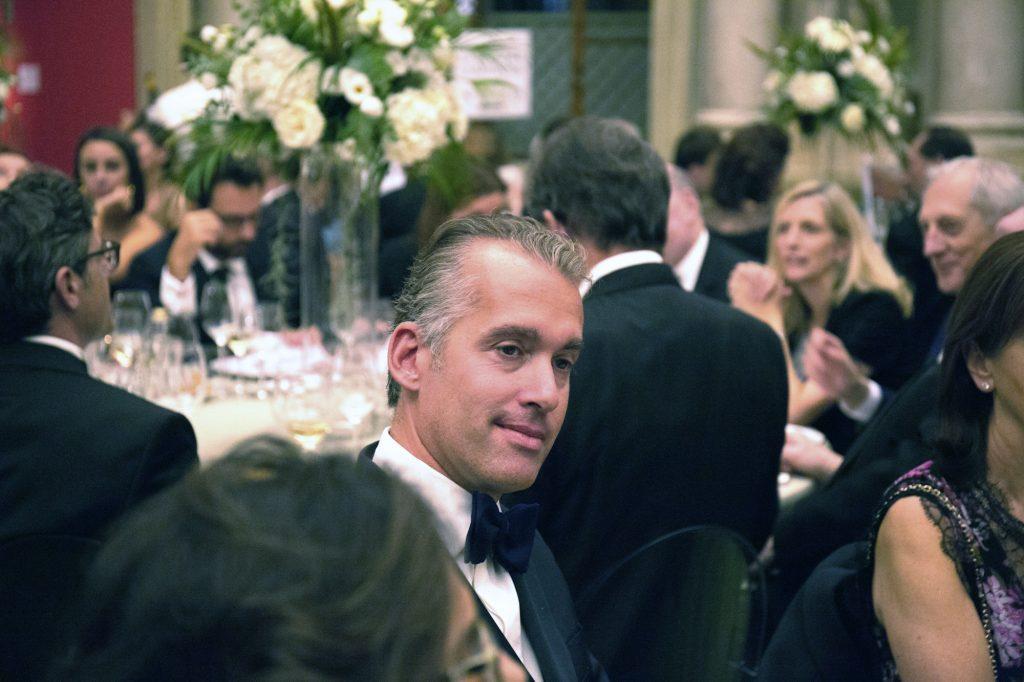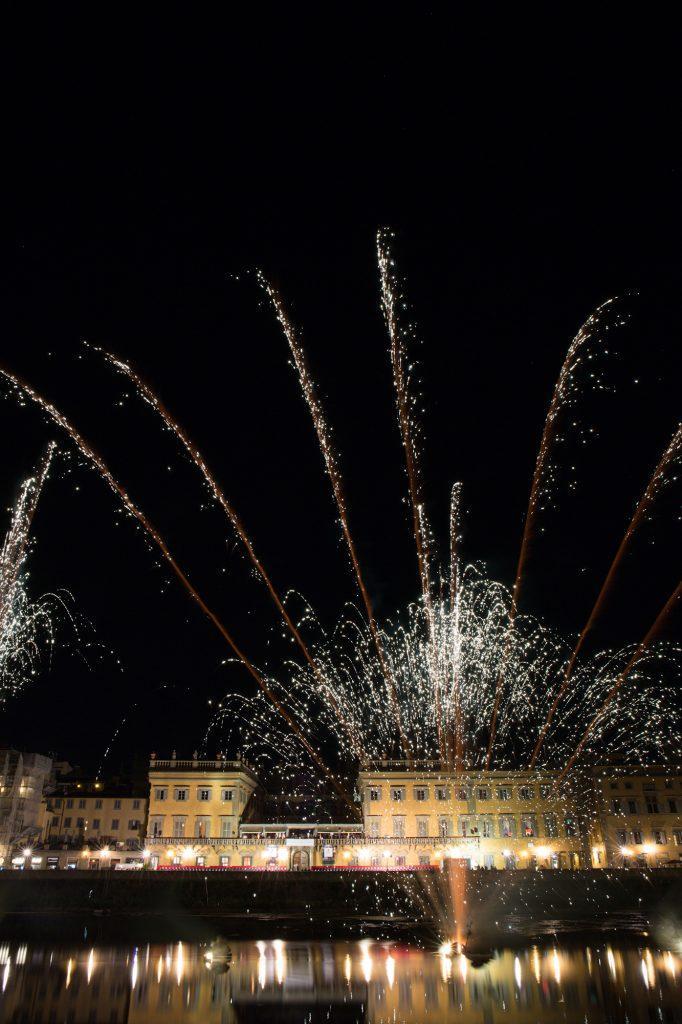(MENAFN- USA Art News)
On the eve of a snap general election in Italy, which is looking most likely to see victory for a far-right party with fascist ties, the people of Florence were busy raising glasses to the return of the city's art week for the first time since the pandemic.
At the country's most important Old Masters fair, BIAF, the Biennale Internazionale dell'Antiquariato di Firenze, international curators from the Met and LACMA rubbed elbows with Italian colleagues from the Uffizi Galleries at the elegant mid-17th-century Palazzo Corsini, and buzzed about the attendance of major collectors such as American music producer John Landau (a renowned sculpture connoisseur, who also happens to be Bruce Springsteen's manager). Elsewhere, in the open-air courtyard of the Palazzo Strozzi, which has been making strides in its quest to attract a younger audience to art, a DJ entertained Instagram art-fluencers at an immersive Olafur Eliasson exhibition.
Italy's general election—which will take place on Sunday, September 25—was triggered by the resignation of prime minister Mario Draghi earlier this summer amid political infighting and the collapse of his fragile coalition government of left, right, and centrist parties. Currently leading in the polls is the so-called“center-right coalition,” which includes four parties, the biggest of which is Giorgia Meloni's right-wing, nationalist Brothers of Italy (Fratelli d'Italia), which is rooted in a neo-Fascist party created after the death of Benito Mussolini. There is also Matteo Salvini's anti-immigration, nationalist Northern League (Lega Nord), and ex-prime minister Silvio Berlusconi's more moderate party Go Italy (Forza Italia).
Among the 800 attendees of BIAF's gala dinner, the sentiment surrounding Italy's political state of play was a general sense of hope that a change of government might bring an opportunity to fix the problems that have been beleaguering Italy's art market. While the global auction market for Old Masters has had its best first half in five years, growing just under 20 percent and generating $405.9 million (according to data from Artnet's price database), Italy's auction market had its worst first half since 2017, with total sales down 27 percent from where they were in 2021. And where the private market for the Old Masters category is also seeing positive movements due to pent-up demand spilling over from lockdown, as evinced by reports from TEFAF Maastricht earlier this year , in Florence people were complaining of a state at“war” with its art dealers.

Antonio Canova, Autoritratto di Giorgione. Courtesy AL Fine Art Antonacci Lapiccirella, Rome.
The cause of the disgruntlement is Italy's draconian export laws, which mean that the state must grant a special export license for all objects of cultural importance. Works deemed too important to leave Italy—and there are many—become“notified” and can only be sold domestically, where the state closely watches their movements. BIAF's chairman, Fabrizio Moretti, confirmed that around 10 percent of the objects on view at the fair were so“notified,” with a further 25 percent lacking an export license, meaning that only around 65 percent of objects could safely be marketed to international clients.
A rediscovered Antonio Canova work at the booth of Rome's Antonacci Lapiccirella gallery caught more than one bypasser's attention. But dealer Francesca Antonacci told Artnet News that the rare painting (executed by the neoclassical sculptor on a 16th-century panel as part of an elaborate prank on behalf of his patron), had been notified by the state.
“We have this huge problem in Italy. It's okay if the state thinks that a work of art is very important and should stay in Italy and be exhibited in museums, but why does the government then not buy it? They just stop us and that's it,” Antonacci said.“As dealers, we do this difficult work: We discover and restore works of art like the Canova and many others, and then we are punished for it. So we really hope that this will change.”
The fair's chairman, Moretti, expressed hope that the future minister of culture, whoever they may be,“will be open to the market.” Which is not to say, he clarified, that they should“open the doors to make works of art leave Italy, but to facilitate more elasticity between the market and the state, to see if we can find a dialogue.”
He added that this includes reducing the red tape around temporary imports (currently bureaucratic hurdles can take as much as three months to surmount.)“Let's hope that the future minister will be at least sensible and will be a man of culture. In Italy we haven't had for many years a man of culture in that position. Only politicians. And I think that is extremely wrong.”

Fabrizio Moretti. Image courtesy BIAF.
One drama that has preoccupied politicians in recent years surrounds a series of reforms made in 2015 that allowed foreigners to run major institutions across the country. They were briefly rolled back under the short tenure of populist culture minister Alberto Bonisoli , who favored native Italians in the role. Now, foreign museum directors, such as the German leader of the Uffizi Galleries, Eike Schmidt, might be holding their breath to see whether a nationalist win see the country return to more isolationist cultural positioning.
Several Italian exhibitors at the fair there expressed resentment about the great Italian curators leading museums abroad (such as Gabriele Finaldi, the director of London's National Gallery, or the Getty Museum's senior paintings curator, Davide Gasparotto). Most agreed that everyone, regardless of their nationality, should be eligible to apply for museum roles, but there was a feeling that they would prefer to see Italians in these posts. As Moretti put it,“Do you think the Louvre would have put somebody not French in that position?”
Palazzo Strozzi director Arturo Galansino is hoping that the elected politicians, regardless of their party affiliation, will recognize the importance of culture as an economic driver. His museum alone generates €60 million for the city per year.“I think all the politicians know that culture is a fundamental asset for Italy, and they should invest more and more in culture because it is evident if you browse around Florence today how important it is in bringing tourism, of course to make the lives of the people better, but also to generate economy.”
His museum, which is currently hosting a VR exhibit and offers services such as a“teenager kit,” has concentrated its efforts to attract Florence's youth, particularly during the pandemic, which links to another problem facing politics in Italy: a largely disinterested younger generation. A very unscientific canvasing of fresh-faced partygoers about their voting plans was met with more than one shrug, which seems in line with Italy's high number of undecided voters, and the estimated 41 percent of the electorate not planning to vote at all, according to Euronews .

Image courtesy BIAF.
The aging of the guard has also been an issue facing the Old Masters market for years.“The Old Master world needs fresh blood,” Moretti said. Efforts to make the field more alluring were visible at the fair, from QR codes for catalogue information to an increased Instagram presence to a video game aimed at teaching Florentine history.“It's a problem of culture,” the dealer proselytized.“We're living today in the lowest moment of culture (in the world, not just in italy) the new generation are ignorant and not educated.”
Moretti said his gallery, Moretti Fine Art, exhibited next to Hauser and Wirth at Frieze Masters to try to reach a new audience, and has just gone into business in London with Emma Ward, former managing director of Dickinson Gallery, on a new venture focused on 19th- and 20th-century artworks.“Contemporary and modern art is a stronger market in the world,” Moretti said.“But we need to try and make these people understand that the Old Masters is the beginning. You can't understand a modern picture if you haven't studied the old masters. And also in terms of investment, Old Masters today are very cheap with respect to modern pieces.”
The dialogue between old and new was also a concern identified by Florence's social-democratic mayor, Dario Nardella.“Florence is not only an unbelievable capital of cultural heritage but it is also an important actor on the contemporary stage,” Nardella told Artnet News.“This is our challenge: to be a big contemporary city, not only a city-museum, but also a living city capital of creativity, and innovation. This is the best way to keep the memory of the renaissance.”
MENAFN23092022005694012507ID1104916921
Legal Disclaimer:
MENAFN provides the information “as is” without warranty of any kind. We do not accept any responsibility or liability for the accuracy, content, images, videos, licenses, completeness, legality, or reliability of the information contained in this article. If you have any complaints or copyright issues related to this article, kindly contact the provider above.